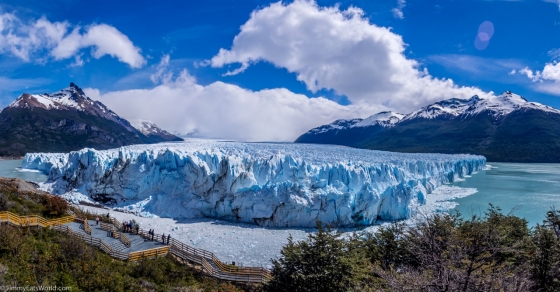El Calafate Rainfall & Precipitation: Monthly Averages and Year-Round Insights
This page shows both the average monthly rainfall and the number of rainy days in El Calafate, Santa Cruz, Argentina. These averages rely on historical data collected over 30 years, from 1990 to 2020. Let's now guide you through the details for a complete overview.
Generally, El Calafate has a moderate amount of precipitation, averaging 858 mm of rain/snowfall annually.
Monthly Precipitation Levels
The average number of days each month with precipitation (> 0.2 mm)
The wettest period in El Calafate occurs in April, which receives around 88 mm of precipitation. During the driest month, September, El Calafate experiences moderate snow/rainfall, totaling approximately 59 mm. The consistent precipitation levels throughout the year contribute to a relatively stable climate.
April, the wettest month, has a maximum daytime temperature of 10°C. The city receives 157 hours of sunshine in this period. During the driest month September you can expect a temperature of 7°C. For more detailed insights into the city’s temperatures, visit our El Calafate Temperature page.
Annual Precipitation in Argentina
The map below shows the annual precipitation across Argentina. You can also select the different months in case you are interested in a specific month.
 heavy rainfall
heavy rainfall
 high
high
 moderate
moderate
 low
low
 almost none
almost none
Amsterdam Precipitation Compared World Wide
El Calafate’s average annual precipitation is 858 mm. Let’s compare this to some popular worldwide tourist destinations:
In Barcelona, Spain, the average annual precipitation is 644 mm, evenly distributed across the year with no extreme wet or dry seasons.
In Seoul, South Korea, the average annual precipitation is 1237 mm, with most rain falling during the summer monsoon season.
In Tokyo, Japan, the average annual precipitation is 1528 mm, with significant summer rains due to typhoon season.
Mumbai, India, experiences a tropical monsoon climate with 1860 mm of annual rainfall, with the majority of precipitation happening during the monsoon season from June to September.
How is Precipitation Measured?
Precipitation amounts are measured using specific gauges installed at weather stations, collecting both rain and snow and any other type of precipitation. Rainfall is measured directly in millimeters, while that from snow and ice is obtained by melting it. Automated systems often incorporate heaters to make this easier.
Information from these stations is transmitted via Wi-Fi, satellite, GPS, or telephone connections to central monitoring networks. This information is immediately updated and integrated into weather models and forecasts.
Interesting weather facts
- "Ginger" was the longest-lasting Atlantic tropical storm, which spun around the open ocean for 28 days in 1971.
- The world's largest snowflake was recorded in the Guinness Book of Records, at 38 cm wide and 20 cm thick. The snowflake fell at Fort Keogh, Montana, USA, on 28 January 1887.
- The greatest snowfall recorded was on Mt. Rainier, Washington State, USA—over 31.5 meters fell during the winter of 1972.
For more detailed information about El Calafate’s weather, including sunshine hours, humidity levels, and temperature data, visit our El Calafate Climate page.
Current rainfall in El Calafate







